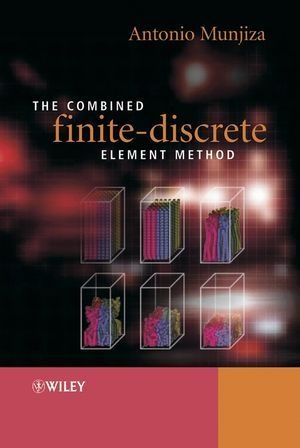Read more
Informationen zum Autor Antonio A. Munjiza is the author of The Combined Finite-Discrete Element Method, published by Wiley. Klappentext The combined finite discrete element method is a relatively new computational tool aimed at problems involving static and / or dynamic behaviour of systems involving a large number of solid deformable bodies. Such problems include fragmentation using explosives (e.g rock blasting), impacts, demolition (collapsing buildings), blast loads, digging and loading processes, and powder technology.The combined finite-discrete element method - a natural extension of both discrete and finite element methods - allows researchers to model problems involving the deformability of either one solid body, a large number of bodies, or a solid body which fragments (e.g. in rock blasting applications a more or less intact rock mass is transformed into a pile of solid rock fragments of different sizes, which interact with each other). The topic is gaining in importance, and is at the forefront of some of the current efforts in computational modeling of the failure of solids.* Accompanying source codes plus input and output files available on the Internet* Important applications such as mining engineering, rock blasting and petroleum engineering* Includes practical examples of applications areasEssential reading for postgraduates, researchers and software engineers working in mechanical engineering. Zusammenfassung The combined finite discrete element method is a relatively new computational tool aimed at problems involving static and/or dynamic behaviour of systems involving a large number of solid deformable bodies. This work covers important applications such as mining engineering, rock blasting and petroleum engineering. Inhaltsverzeichnis Preface. Acknowledgements. 1 Introduction. 1.1 General Formulation of Continuum Problems. 1.2 General Formulation of Discontinuum Problems. 1.3 A Typical Problem of Computational Mechanics of Discontinua. 1.4 Combined Continua-Discontinua Problems. 1.5 Transition from Continua to Discontinua. 1.6 The Combined Finite-Discrete Element Method. 1.7 Algorithmic and Computational Challenge of the Combined Finite-Discrete Element Method. 2 Processing of Contact Interaction in the Combined Finite Discrete Element Method. 2.1 Introduction. 2.2 The Penalty Function Method. 2.3 Potential Contact Force in 2D. 2.4 Discretisation of Contact Force in 2D. 2.5 Implementation Details for Discretised Contact Force in 2D. 2.6 Potential Contact Force in 3D. 2.6.1 Evaluation of contact force. 2.6.2 Computational aspects. 2.6.3 Physical interpretation of the penalty parameter. 2.6.4 Contact damping. 2.7 Alternative Implementation of the Potential Contact Force. 3 Contact Detection. 3.1 Introduction. 3.2 Direct Checking Contact Detection Algorithm. 3.2.1 Circular bounding box. 3.2.2 Square bounding object. 3.2.3 Complex bounding box. 3.3 Formulation of Contact Detection Problem for Bodies of Similar Size in 2D. 3.4 Binary Tree Based Contact Detection Algorithm for Discrete Elements of Similar Size. 3.5 Direct Mapping Algorithm for Discrete Elements of Similar Size. 3.6 Screening Contact Detection Algorithm for Discrete Elements of Similar Size. 3.7 Sorting Contact Detection Algorithm for Discrete Elements of a Similar Size. 3.8 Munjiza-NBS Contact Detection Algorithm in 2D. 3.8.1 Space decomposition. 3.8.2 Mapping of discrete elements onto cells. 3.8.3 Mapping of discrete elements onto rows and columns of cells. 3.8.4 Representation of mapping. 3.9 Selection of Contact Detection Algorithm. 3.10 Generalisation of Contact Detection Algorithms to 3D Space....

